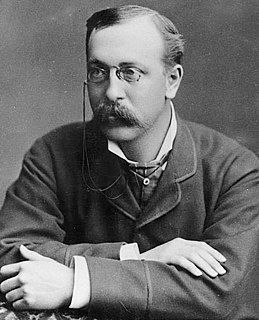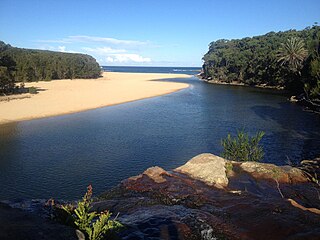
Cruising by boat is a lifestyle that involves living for extended time on a vessel while traveling from place to place for pleasure. Cruising generally refers to trips of a few days or more, and can extend to round-the-world voyages.

Terra Australis was a hypothetical continent first posited in antiquity and which appeared on maps between the 15th and 18th centuries. The existence of Terra Australis was not based on any survey or direct observation, but rather on the idea that continental land in the Northern Hemisphere should be balanced by land in the Southern Hemisphere. This theory of balancing land has been documented as early as the 5th century on maps by Macrobius, who uses the term Australis on his maps.

The maritime European exploration of Australia consisted of several waves of white European seafarers that sailed the edges of the Australian continent. Dutch navigators were the first Europeans known to have explored and mapped the Australian coastline. The first documented encounter was that of Dutch navigator Willem Janszoon, in 1606. Dutch seafarers also visited the west and north coasts of the continent, as did French explorers.

George Washington De Long was an American Navy officer and explorer who led the ill-fated Jeannette Expedition of 1879–1881, in search of the Open Polar Sea.

Willem Hesselsz de Vlamingh was a Dutch sea captain who explored the central west coast of Australia in the late 17th century. The mission proved fruitless, but Vlamingh charted parts of the continent's western coast.

Phragmites is a genus of four species of large perennial grasses found in wetlands throughout temperate and tropical regions of the world. The World Checklist of Selected Plant Families, maintained by Kew Garden in London, accepts the following four species:
- Phragmites australis(Cav.) Trin. ex Steud. – cosmopolitan
- Phragmites japonicusSteud. – Japan, Korea, Ryukyu Islands, Russian Far East
- Phragmites karka(Retz.) Trin. ex Steud. – tropical Africa, southern Asia, Australia, some Pacific Islands
- Phragmites mauritianusKunth – central + southern Africa, Madagascar, Mauritius

Tim Severin is a British explorer, historian and writer. Severin is noted for his work in retracing the legendary journeys of historical figures. Severin was awarded both the Gold Medal of the Royal Geographical Society and the Livingstone Medal of the Royal Scottish Geographical Society. He received the Thomas Cook Travel Book Award for his 1982 book The Sindbad Voyage.

SS America was an ocean liner built in 1940 for the United States Lines and was designed by the noted American naval architect William Francis Gibbs. She carried many names in the 54 years between her construction and her 1994 wrecking, as she served as the SS America, the USS West Point, the SS Australis, the SS Italis, the SS Noga, the SS Alferdoss, and the SS American Star. She served most notably in passenger service as the SS America, and as the Greek-flagged SS Australis.
The sport and practice of single-handed sailing or solo sailing is sailing with only one crewmember. The term usually refers to ocean and long-distance sailing and is used in competitive sailing and among Cruisers.

The Sunday Times Golden Globe Race was a non-stop, single-handed, round-the-world yacht race, held in 1968–1969, and was the first round-the-world yacht race. The race was controversial due to the failure of most competitors to finish the race and because of the suicide of one entrant; however, it ultimately led to the founding of the BOC Challenge and Vendée Globe round-the-world races, both of which continue to be successful and popular.
Shane John Acton was an English sailor, known for circumnavigating the globe in an 18-foot (5.5 m) boat, the smallest ever to survive the voyage. He first set sail from Britain in 1972 at the age of 25.

Wattamolla is the name of a cove, lagoon, and beach on the New South Wales coast south of Sydney, within the Royal National Park.

Captain Matthew Flinders was an English navigator and cartographer who led the first circumnavigation of Australia and identified it as a continent.
Point Culver is a headland on the south coast of Western Australia. It is located at 32° 54' S 124° 41' E, near the western end of the Great Australian Bight.

The Babel Island, part of the Babel Group within the Furneaux Group, is a 440-hectare (1,100-acre) granite island, located in Bass Strait, lying off the east coast of Flinders Island, Tasmania, south of Victoria, Australia. The privately owned island was named by Matthew Flinders from the noises made by the seabirds there.

Coronet, a wooden-hull schooner yacht built in 1885, is one of the oldest and largest schooner yachts in the world.
This is a list of Australian places named by James Cook. James Cook was the first navigator to chart most of the Australian east coast, one of the last major coastlines in the world unknown to Europeans at the time. Cook named many bays, capes and other geographic features, nearly all of which are still gazetted, and most of which are still in use today, although in some places the spelling is slightly different. This is a list of the placenames he used in his first voyage listed from south to north as described on his 1773 chart and in his journals.
The positions of the feet in ballet is a fundamental part of classical ballet technique that defines standard placements of feet on the floor. There are five basic positions in modern-day classical ballet, known as the first through fifth positions. In 1725, dancing master Pierre Rameau credited the codification of these five positions to choreographer Pierre Beauchamp. Two additional positions, known as the sixth and seventh positions, were codified by Serge Lifar in the 1930s while serving as Ballet Master at the Paris Opéra Ballet, though their use is limited to Lifar's choreographies. The sixth and seventh positions were not Lifar's inventions, but revivals of positions that already existed in the eighteenth century, when there were ten positions of the feet in classical ballet.

A Voyage to Terra Australis: Undertaken for the Purpose of Completing the Discovery of that Vast Country, and Prosecuted in the Years 1801, 1802, and 1803, in His Majesty's Ship the Investigator was a sea voyage journal written by English mariner and explorer Matthew Flinders. It describes his circumnavigation of the Australian continent in the early years of the 19th century, and his imprisonment by the French on the island of Mauritius from 1804–1810.

James Wharram is a multihull pioneer and designer of catamarans.



















